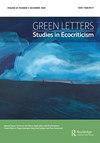巴苏拉:当代西班牙的废物文化
Q1 Arts and Humanities
引用次数: 0
摘要
我断断续续在马德里住了7年,当时一场历史性的垃圾工人罢工让街道和地铁隧道看起来像垃圾博物馆。在罢工期间,我发现了一些珍贵的东西:宽大的橡木横梁,我把它变成了一条长凳,一台打字机,几把老式的椅子,只需要一点鼓励。在马德里,这是一个激动人心的时刻——如果说是美妙的时刻——紧跟着在马德里中心广场持续数月的15-M占领运动,对教皇本笃2011年访问的喧嚣反应,以及2008年之后10年的大部分时间里持续不断的危机导致的驱逐和抗议。西班牙感觉自己正处于政治和文化大变革的风口浪尖,然后……垃圾。塞缪尔·阿马戈的书《巴苏拉:当代西班牙的废物文化》将这次垃圾罢工作为一个修辞的出发点,探讨了各种形式的废弃物品的作用。在这部被他定义为“文化考古学”的作品中,他通过面向对象的本体论、重要唯物主义和西班牙裔研究的视角来看待垃圾,提出了有关文化垃圾如何反映其价值的尖锐而相关的问题,同时也深入探讨了我们的垃圾文化所产生的创造性潮流。这些问题是相关的,因为正如Amago指出的那样,“垃圾可能是人类对地质记录的最大贡献之一”(9)。他的书对从特内里费岛到圣多明各的艺术项目进行了编目,探讨了艺术家如何利用废物的原材料与同时代人交谈。他关注的艺术家有佩德罗Almodóvar和Ángeles维拉塔,维拉塔是一名记者,他在20世纪50年代的西班牙深入卧底,近距离观察特拉帕德罗(夜间在城市里游荡的垃圾分拣工)的生活。Amago声称,垃圾正迅速成为人类世的持久象征,是捕捉人类世价值的完美过滤器。本文章由计算机程序翻译,如有差异,请以英文原文为准。
Basura: Cultures of Waste in Contemporary Spain
I had been living in Madrid on and off for seven years when an historic strike by garbage workers left the streets and metro tunnels looking like museums of refuse. I found treasures during the strike: wide oak beams that I turned into a bench, a typewriter, vintage chairs that needed just a bit of encouragement. It was an exciting – if aromatic – moment in Madrid that followed close on the tails of the 15-M occupy movement that settled in Madrid‘s central plaza for months, a raucous reaction to Pope Benedict's 2011 visit, and a steady stream of evictions and protests resulting from the crisis that lingered on for the better part of a decade after 2008. Spain felt as if it were on the cusp of big tumultuous political and cultural change, and then . . . trash. Samuel Amago‘s book Basura: Cultures of Waste in Contemporary Spain takes that garbage strike as a rhetorical jumping off point to explore the agency of discarded things in all their guises. In this work of what he defines as ‘cultural archaeology‘, he looks at garbage through the lenses of object-oriented ontology, vital materialism and Hispanic studies, asking hard and relevant questions about what a culture‘s trash says about its values, but also diving deep into the creative currents generated by our cultures of waste. The questions are relevant because, as Amago points out, ‘Trash will likely be one of humanity's greatest contributions to the geologic record‘ (9). Cataloguing art projects from Tenerife to Santo Domingo, his book looks at how artists have channelled the raw materials of waste to speak to their contemporaries. He looks at artists as diverse as Pedro Almodóvar and Ángeles Villarta, a journalist who went deep undercover in 1950ʹs Spain to see the lives of the trapaderos – garbage sorters who wandered the city at night – up close. Amago claims that trash, which is fast becoming a lasting symbol of the anthropocene, is the perfect filter through which to capture the values of the Anthropocene:
求助全文
通过发布文献求助,成功后即可免费获取论文全文。
去求助
来源期刊

Green Letters
Arts and Humanities-Literature and Literary Theory
CiteScore
0.50
自引率
0.00%
发文量
38
期刊介绍:
Green Letters: Studies in Ecocriticism explores the relationship between literary, artistic and popular culture and the various conceptions of the environment articulated by scientific ecology, philosophy, sociology and literary and cultural theory. We publish academic articles that seek to illuminate divergences and convergences among representations and rhetorics of nature – understood as potentially including wild, rural, urban and virtual spaces – within the context of global environmental crisis.
 求助内容:
求助内容: 应助结果提醒方式:
应助结果提醒方式:


